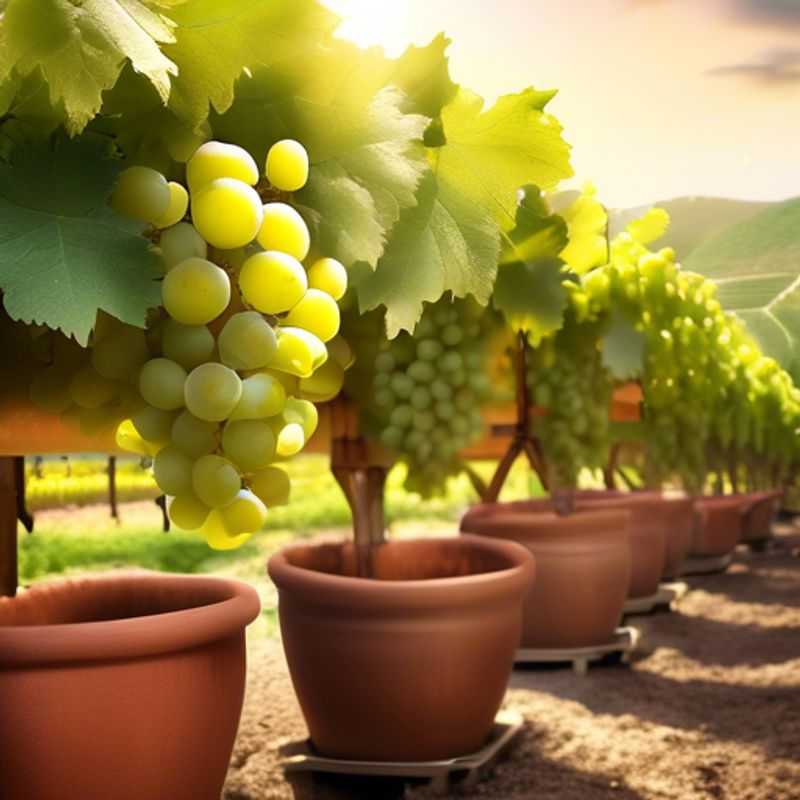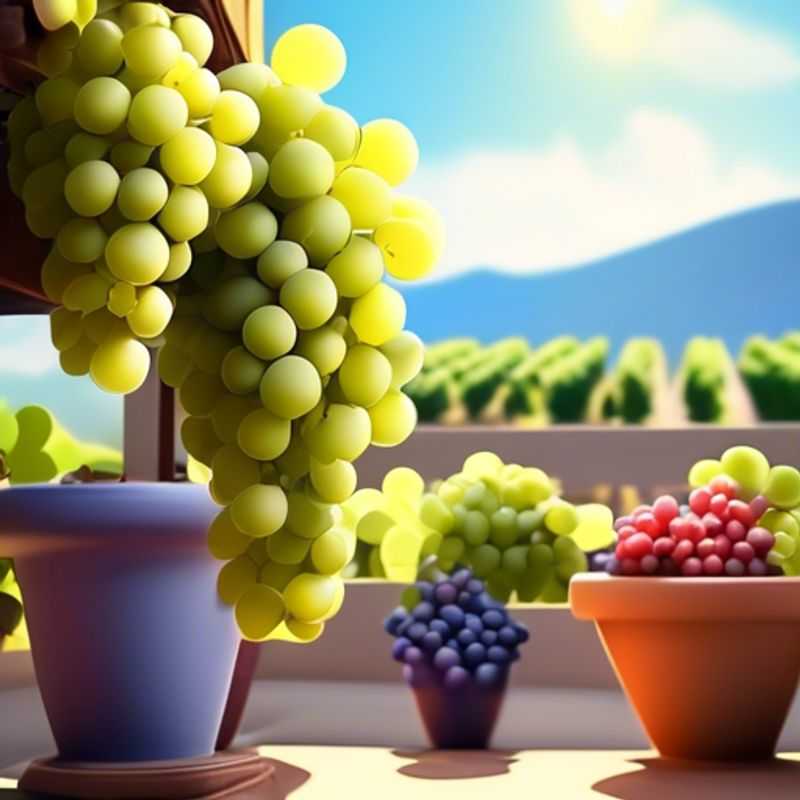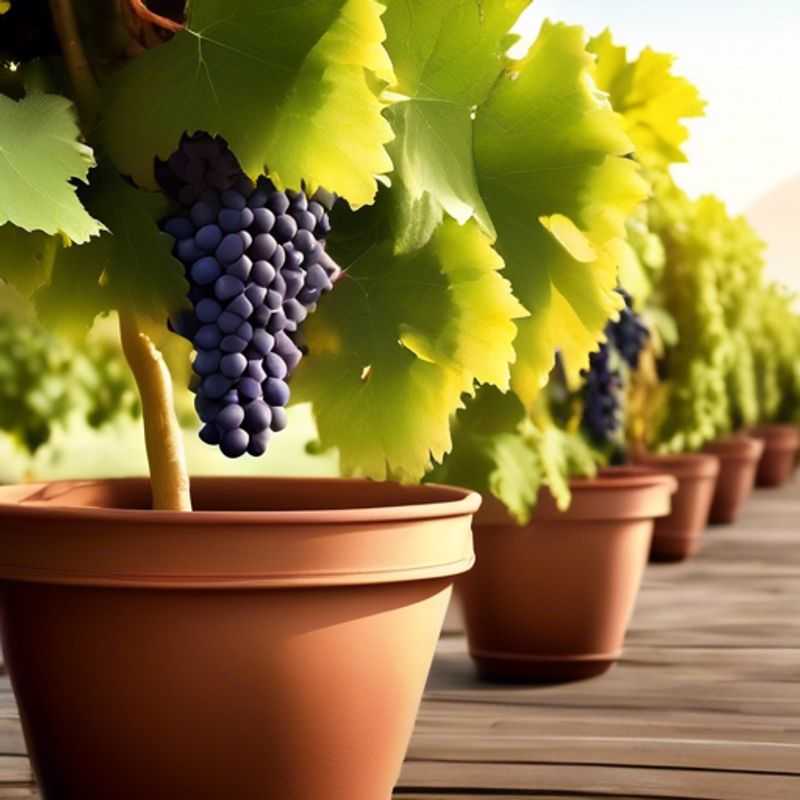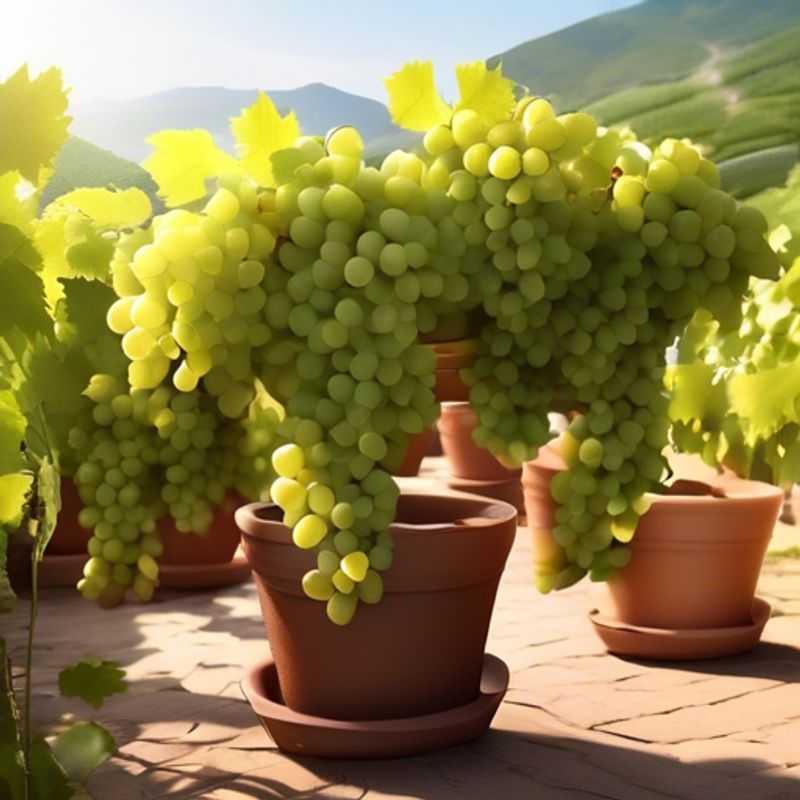Top Things to Know Before Buying Growing Grapes In Pots

Top Things to Know Before Buying Growing Grapes In Pots: Choosing the Right Variety, Drainage, Potting Mix, Sunlight, Watering, Fertilizing, Pruning and Training
Growing grapes in pots can be a rewarding experience, bringing the joy of fresh fruit to your patio or balcony. But before you dive into this delightful endeavor, there are some crucial things to consider to ensure success.
Choose the right grape variety for container growing. Not all grape varieties thrive in pots. Opt for varieties known for their compact growth habit and fruit production, such as Concord, Niagara, or Crimson Seedless.
Ensure the pot has adequate drainage holes. Grapes, like most plants, dislike soggy roots. Choose a pot with multiple drainage holes to prevent waterlogging and root rot.
Use a well-draining potting mix specifically for grapes. A potting mix formulated for fruit trees or vegetables provides the necessary nutrients and drainage for optimal grape growth.
Provide at least 6 hours of direct sunlight per day. Grapes are sun-loving plants, so choose a location that receives ample sunshine. The more sunlight they get, the sweeter and more abundant their fruit will be.
Water regularly to keep the soil consistently moist. Grapes need consistent moisture, especially during the growing season. However, avoid overwatering, which can lead to root problems. Let the top inch of soil dry out slightly between waterings.
Fertilize with a balanced, slow-release fertilizer. Grapes are heavy feeders and require regular fertilization. Choose a balanced fertilizer specifically for fruit trees or vegetables, and apply it according to the product's instructions.
Prune and train the vines to maintain their shape. Regular pruning encourages fruit production and helps control the vine's growth. Train the vines to grow upwards on a trellis or other support system to maximize space and light exposure.
By following these tips, you'll set the stage for a successful grape-growing adventure in your pot, bringing a taste of the vineyard to your doorstep.

Grow Your Own Grapes: Choosing the Right Variety for Container Gardening
Growing grapes in containers opens up a world of possibilities for even those with limited space. To ensure success, choosing the right grape variety is crucial. When selecting your grape variety, consider the climate and growing conditions of your region. You might have a warm climate or a cooler climate, each with specific grape varieties that thrive best in these conditions.
Vitis vinifera, commonly known as European grapes, are the most popular for winemaking. They are known for their flavor, color, and structure. However, they can be more demanding than other types. For containers, consider seedless varieties for easier snacking and less mess. Muscadine grapes are known for their disease resistance and hardy nature, making them a great option for beginner growers. American hybrid grapes are often cold-hardy, disease-resistant, and offer versatile flavors.
Remember, selecting the right grape variety is the foundation for a successful container grape growing experience. Be sure to factor in your region's climate and your own personal preferences when choosing the best grapes for your needs.

Drainage Done Right: Why Those Holes in Your Pot Matter
Adequate drainage is crucial for plant health. Ensuring your pot has ample drainage holes prevents waterlogging, which can lead to root rot and ultimately, plant death.
Here's why drainage holes are essential:
When you water your plants, excess water needs a way to escape. If the water remains trapped in the pot, it creates a stagnant environment where harmful bacteria and fungi thrive. This can damage your plant's roots and make it susceptible to diseases.
To ensure proper drainage:
Choose pots with multiple drainage holes at the bottom. The size and number of holes should be appropriate for the pot's size. You can also create additional drainage holes in pots that lack them. If you're using a decorative pot without drainage, consider placing a pot with drainage holes inside.
Remember, a healthy plant starts with healthy roots. By ensuring your pots have adequate drainage, you're giving your plants the best possible chance to thrive.

The Importance of Well-Draining Potting Mix for Grapes
When growing grapes in containers, using a well-draining potting mix is crucial for their healthy growth. Grapevines thrive in well-aerated soil that doesn't hold excess moisture, which can lead to root rot. A well-draining mix will help prevent this.
Look for a potting mix specifically designed for grapes or fruit trees. These blends often include ingredients like perlite and vermiculite, which promote drainage. You can also amend a standard potting mix by adding perlite, pumice, or composted bark to improve drainage.
Regular watering is essential, especially during hot weather. However, let the soil dry out slightly between waterings to avoid soggy roots.
Consider using a container with drainage holes to allow excess water to escape. Additionally, choose a pot made of a breathable material like terracotta to help the soil dry out faster.
By using a well-draining potting mix and following these tips, you'll create an optimal growing environment for your grapevines, leading to healthier and more productive plants.

6 Hours of Sunshine: Essential for Thriving Plants
Providing at least 6 hours of direct sunlight per day is crucial for optimal plant growth. Sunlight is the primary source of energy for photosynthesis, the process by which plants convert light energy into chemical energy. This energy is essential for plant growth, development, and reproduction.
Direct sunlight provides the necessary intensity and spectrum of light for plants to thrive. Plants require specific wavelengths of light for different stages of growth. Sunlight offers the full spectrum of light needed, ensuring proper photosynthesis and overall plant health.
The amount of sunlight required varies depending on the type of plant. However, most plants benefit from at least 6 hours of direct sunlight. This ensures adequate energy production for healthy growth and development. Plants exposed to insufficient sunlight may exhibit stunted growth, pale leaves, and reduced flower production.

Keep It Moist: Watering Your Plants for Healthy Growth
Keeping the soil consistently moist is essential for healthy plant growth, but it's a balancing act. Too much water can lead to root rot, while too little can cause wilting and stress. The key is to water deeply and infrequently, allowing the top inch of soil to dry out between waterings. This encourages roots to grow deeper, making your plants more resilient.
How often you water depends on several factors:
- Type of plant
- Climate
- Soil type
- Pot size
Always check the soil moisture before watering. You can do this by sticking your finger a couple of inches into the soil. If it feels dry, it's time to water. When you do water, soak the soil thoroughly until water drains out the bottom of the pot.
Regular watering, along with other good plant care practices like providing adequate sunlight and nutrients, is crucial for healthy and thriving plants.

Give Your Garden a Boost with Balanced, Slow-Release Fertilizer
Fertilizing with a balanced, slow-release fertilizer is a highly effective method for promoting healthy plant growth. These fertilizers provide a steady supply of nutrients over an extended period, which minimizes the risk of over-fertilization and nutrient leaching. When selecting a slow-release fertilizer, look for one that contains essential macronutrients: nitrogen (N), phosphorus (P), and potassium (K), often referred to as N-P-K ratios. A balanced ratio, such as 10-10-10 or 14-14-14, ensures that plants receive the nutrients they need in adequate proportions.
Application rates typically vary based on the type of plants and soil conditions, but a general guideline is to apply about 1 to 2 pounds of fertilizer per 100 square feet of garden area. It’s best to apply this in the spring as plants begin their growing season. Additionally, consider the cost of the fertilizer, which can range from $10 to $50 for a 5 to 10-pound bag, depending on brand and quality.
When planning your fertilization strategy, also account for labor costs if hiring professionals or the time commitment for DIY application. Regular monitoring of plant health and soil conditions can help determine if additional applications are necessary. Remember, using a balanced, slow-release fertilizer not only supports plant growth but also enhances soil health over time.

Pruning and Training Vines: Shaping Your Garden's Beauty
Pruning and training your vines are crucial for maintaining their shape, encouraging healthy growth, and maximizing fruit production. Here's a quick guide to help you get started.
Pruning: Pruning involves removing unwanted branches to direct the vine's energy towards productive growth. The most common types of pruning include:
Cane Pruning: This method involves removing older canes (branches) and leaving younger canes to produce fruit. This is commonly used for grapevines and other fruiting vines.
Head Pruning: This method involves cutting back the vine to a specific height, encouraging the growth of new shoots. It's often used for young or newly planted vines.
Training: Training involves guiding the vine's growth to a desired shape. This can be done using trellises, stakes, or other supports. Common training methods include:
Vertical Trellising: This method involves training the vine to grow vertically along a trellis. It's a space-saving method and allows for easy access to the fruit.
Fan Training: This method involves training the vine to grow in a fan shape. It's often used for grapevines and allows for maximum sunlight exposure.
Timing is key: Pruning and training are best done during the dormant season (winter) when the vine is not actively growing. This allows the vine to heal properly and minimizes stress.
Important Tips:
Use sharp, clean tools to minimize damage to the vine.
Remove dead, diseased, or damaged branches.
Don't prune too much, as this can weaken the vine.
Consult a local expert or online resources for specific instructions on pruning and training your particular vine species.
